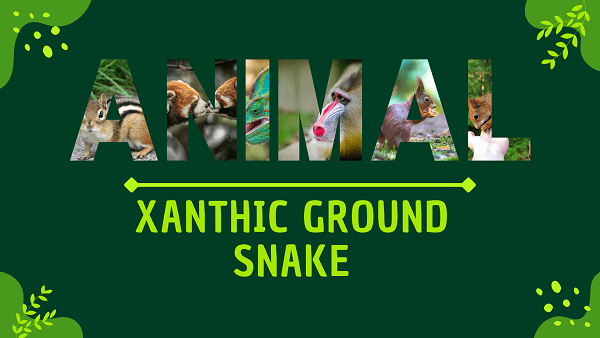Xanthic Ground Snake Overview
Appearance
The Xanthic Ground Snake displays a striking appearance with vibrant yellow or golden-yellow scales. Typically, it has a slender and elongated body, typical of many snake species. Its head is often distinguishable by its slightly different coloration or markings.
This snake can measure up to several feet in length, depending on its age and species. The bright yellow coloration serves as a warning signal to potential predators, indicating its potentially venomous nature.
Origins And Evolution
The origins and evolution of the Xanthic Ground Snake are rooted in the complex history of reptilian adaptation. Over millions of years, these snakes have evolved to thrive in terrestrial environments. Their development includes adaptations for burrowing, a lifestyle that involves elongated bodies, and reduced limbs.
Xanthic Ground Snakes have coevolved with prey species, refining their hunting strategies and venomous capabilities over time.
This evolutionary journey showcases the dynamic interplay between predation, ecological niches, and adaptation in the world of snakes, resulting in a species well-suited to its terrestrial habitat.
Behavior and Lifestyle
The Xanthic Ground Snake is primarily terrestrial, favoring ground-level habitats such as grasslands, forests, and scrublands. They are often solitary creatures, with limited social interactions, except during the breeding season.
These snakes are ambush predators, patiently waiting for prey to pass by before striking. Their striking xanthic coloration serves as a warning to potential predators, indicating their potentially venomous nature.
Scientific Classification
- Kingdom: Animalia
- Phylum: Chordata
- Class: Reptilia
- Order: Squamata
- Family: Colubridae (This is the family to which most non-venomous snakes belong.)
- Genus: (Varies by species)
- Species: (Varies by species)
Xanthic ground snake Locations
- South and Central America
- Parts of North America
- Tropical and subtropical regions
- Specific habitats like grasslands, forests, and scrublands
Fast Facts
- Name: Yellow Serpent
- Scientific Name: Liophis poecilogyrus
- Habitat: Forest Floor
- Diet: Small Reptiles
- Physical Features: Striped Pattern
- Nocturnal: Night Hunter
- Solitary: Lone Dweller
- Unique Order: Squamata Family
- Lifespan: Unknown
- Conservation Status: Data Deficient
- Fun Facts: Camouflaged Scales
Physical Characteristics
- Color: Yellow Scales
- Skin Type: Smooth Texture
- Top Speed: Slithering Pace
- Lifespan: Variable Duration
- Weight: Lightweight Body
- Length: Medium Size
- Age of Sexual Maturity: Breeding Phase
- Age of Weaning: Maternal Independence
FAQs
What is their primary method of hunting?
Xanthic Ground Snakes are ambush predators, waiting for prey to pass by before striking.
Do they constrict their prey like some other snake species?
No, they typically do not constrict their prey; instead, they rely on their venom to immobilize it.
Are Xanthic Ground Snakes primarily active during the day or night?
They are generally nocturnal, meaning they are most active at night.
Do Xanthic Ground Snakes have any known predators?
Predators can include larger snakes, birds of prey, and some mammals.
How do they reproduce?
Xanthic Ground Snakes reproduce sexually, with males typically engaging in courtship rituals to attract females.
What is their conservation status?
Conservation status varies by species, with some facing threats due to habitat loss.
